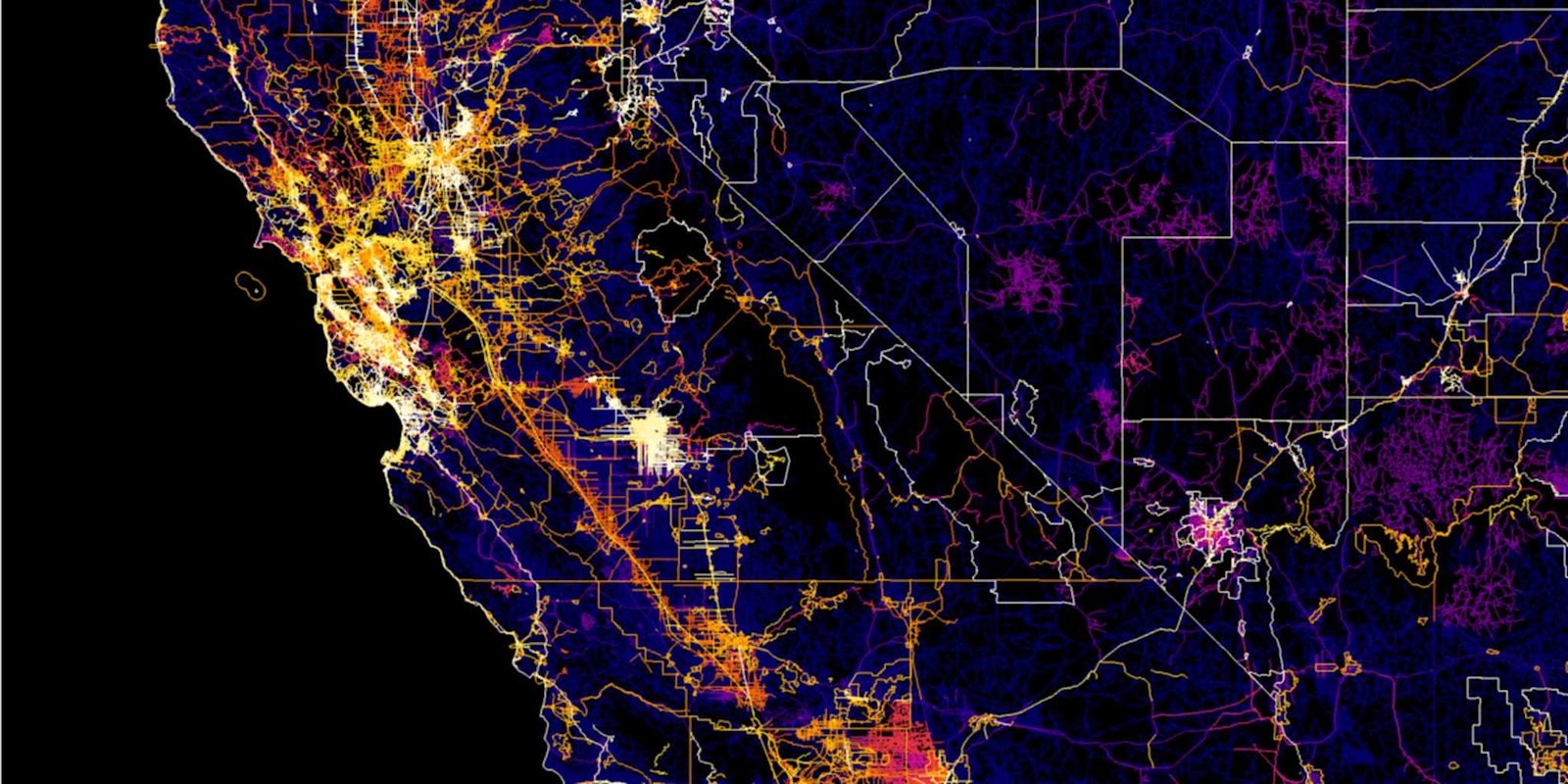The plan to split California into six smaller states has picked up steam since it was announced in December. The idea is that the states would be easier to govern and that the new dynamic would benefit citizens by fostering economic competition. Well, doesn’t that sound nice? But the issue is that it’s also incredibly impractical. Like Herman Cain’s 9-9-9 tax plan, just because a policy sounds good doesn’t mean it makes any sense at all.
The problem with the proposal is that the divisions are not equal. The California Legislative Analyst’s Office pointed out that the plan would create the state with the richest people in the country (Silicon Valley) and the state with the poorest (Central California).
If that chart doesn’t make the disparity clear enough, look at this map of tax returns.
Compare that to this map of the proposed plan.
You’ll notice that the areas with higher returns have been segmented into their own wealthy states, while the areas with the lower returns are left to fend for themselves.
If you had to guess what kind of person wants to split California into these unequal parts, who would it be?
A) A farmer who works seven days a week and has two kids in Central California.
B) A teacher who lives in Jefferson.
C) A venture capitalist in Silicon Valley whose father was a VC and whose father’s father was a VC.
If you guessed C, you’re right! Tim Draper just happens to be a rich man who lives in what would become one of the wealthy states.
I could continue to highlight the obvious income imbalance apparent in the plan, but Draper’s thinking is flawed on a much deeper level. Pitting disparate economies of California against each other doesn’t necessarily benefit the state as a whole. Why? Because California needs food, and a farm can only be so profitable. As the map below demonstrates, the majority of farmland is situated in what would be Central California.
If Central California were to remain such a farm-driven economy, the new state wouldn’t be able to afford the programs that would be easily provided in the wealthy states. It would have to find an industry as profitable as tech, but realistically it would be relegated to a worse school system, police force, and so forth. If you think it’s easy to find a new, highly-profitable industry for an area of trained and eager workers, look at Detroit.
One of the primary benefits of a large state governance is a diversified economic portfolio. When a Silicon Valley bubble bursts, there’s plenty of other industry to support it. When there’s a drought throughout the state, farmers (ideally) also receive relief. Those who make more than $200,000 are paying the majority of taxes in California, which means those who make less than that hefty sum (the vast majority of the population) benefit from a system where all of the citizens are paying for the same initiatives. This means that the wealthy have to provide the lion’s share of government spending for the good of the state.
Let me reiterate: If you live in California and make less than $200,000 a year, the Six Californias plan is probably going to hurt your wallet.
Draper is making a bold statement in saying that more government is better for the economy, but his reasoning in this case isn’t supported by the numbers. Steven Maviglio and Joe Rodota laid out pretty much every other known flaw of the plan for the U-T San Diego. To start:
If passed, his proposal will set in motion the most bureaucratic, costly, paper-pushing process in our history. In Draper’s alternate reality, we’d spend years doing nothing more than rewriting laws, duplicating government offices, and spending billions of dollars unnecessarily.
They describe other reasons the plan would swell government spending. While I’m a big proponent of huge infrastructure investments that pay off over time, this is one that will never come to fruition. Imagine paying for a house and then driving to the lot only to find it’s made of quicksand.
Splitting California geographically, with no thought for wealth and industry distribution, is short-sighted at best. Another possibility would be to divide the state into calculated and oddly-shaped equal economic segments. The issue here would be splitting geographic areas that might be considered part of the same regional culture. And could this be done well without a larger shift toward income equality? Probably not.
President Obama has called economic inequality “the defining issue of our time,” and enacting this plan would accelerate, not dampen the issue. Creating rich states and poor states doesn’t magically lift those poor states from poverty through competition. If you live in a wealthy part of a city, you can probably think of poorer neighborhoods that have been poor for decades. You don’t lift an area from poverty by taking money away from it, you lift it by investing in government expenditures like schools.
Therein lies the main conflict: The lure of the free market against the realities of the Californian economy. It’s true that California has a deeply-flawed government, but the Six Californias plan isn’t the reform the state needs. Due to the vast and growing wealth inequality, there would not be a level playing field for the economic competition among the states. Until that disparity is rectified, no such plan could ever proceed.
The idea is not wholly unlike the South’s desire to secede. The Confederate States of America wanted to build a new economy focused on state governments. Toward the end of the Civil War, Confederate President Jefferson Davis said of the plan, “If the Confederacy falls, there should be written on its tombstone: Died of a theory.” I can safely say that the Six Californias proposal will succumb accordingly.


